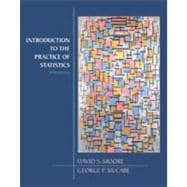With its focus on data analysis, statistical reasoning, and the way statisticians actually work, Introduction to the Practice of Statistics (IPS) helped bring the power of critical thinking and practical applications to today's statistics classroom. Unlike more traditional ?plug and chug? /formula driven texts, IPS de-emphasizes probability and gives students a deeper understanding of statistics.








